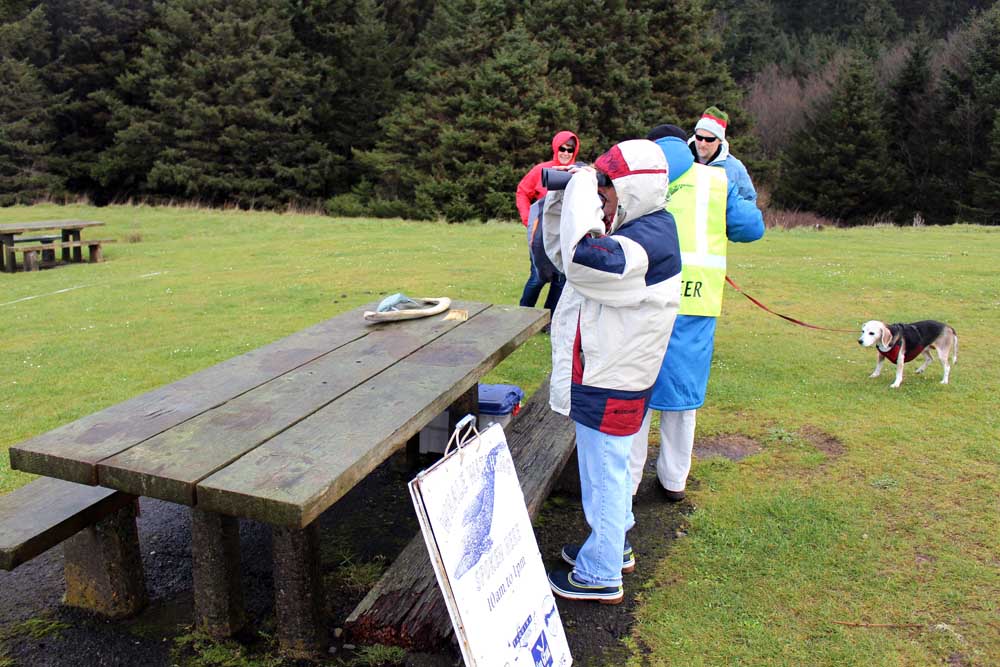Migrating whales pass the Oregon Coast
Published 5:09 am Thursday, March 31, 2016

- It's time to start looking for whales along the North Coast.
CANNON BEACH — Locals and spring break visitors had the opportunity to spot gray whales swimming north, part of the 6,000-mile round-trip migration the mammals make each year.
Trending
Ecola State Park was one of the 24 designated sites for the Spring Whale Watch Week hosted by Oregon State Parks and Recreation.
About 300 volunteers were stationed along the coast last week, helping state park visitors identify and learn about the expected 20,000 gray whales heading to summer feeding grounds in the Arctic’s Bering and Chukchi seas.
Volunteers spotted 1,552 gray whales statewide, the state reported.
Trending
Ecola State Park whale-watching volunteers had already spotted 14 whales on the morning of March 22.
“It’s a good day to see them,” said volunteer Carl Hosticka, from Tualatin, using binoculars to look for whale spouts. “The sun illuminates the spouts so they will be easier to see.”
Gray whales will keep swimming past the coast until October or November, Oregon State Parks and Recreation ranger Luke Parsons said. Resident gray whales that stay in the central Oregon Coast area also show up later in spring.
“These whales are the first-wave migration, the males and the immature females,” Parsons said. “The majority of the mothers and the calves start showing up in late April and May.”
When it gets dark in the Arctic around October, gray whales head back south. Hosticka also volunteered for the Winter Whale Watch Week in December, when gray whales can be seen traveling from the Arctic to lagoons in Baja California, Mexico, where they mate and give birth.
Volunteers, trained with the Whale Watching Spoken Here program, taught visitors about whale migration and feeding habits.
Gray whales, which prefer to eat organisms near the bottom of the ocean such as small crustaceans, do not eat much while migrating.
“There isn’t much for them to eat along here,” Hosticka said. “They bulk up and swim day and night because they can sleep with half their brain.”
How long does it take for gray whales to migrate to the Arctic? It depends on the whale.
“Some of them are in a hurry and it will take them three or four months, and for some it takes even longer,” Parsons said. “The mothers will travel quite a bit slower with their little babies. It’s nonstop for several months just to get there. They’re dedicated animals.”
The length of an average female gray whale, 45 feet, was displayed in the grass using measuring tape. Females are usually larger than males, and their milk is rich, made up of more than 50 percent fat, Hosticka said.
Instead of teeth, gray whales have rows of bristly plates called baleens, which allow them to filter the food and water they scoop off the ocean floor with their mouths.
On the journey north from Baja California, the babies continue to nurse and begin learning how to eat.
“The mothers are teaching them tricks of the trade,” Parsons said.









